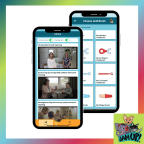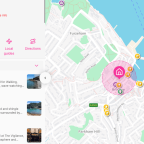
How to develop a brilliant MVP
This is a guest post from the team at Unfold, a small, passionate team of designers, developers and strategists based in the heart of Bristol. They help ambitious start-ups and scale-ups accelerate their business by simplifying their user experience and creating market-leading digital products. Contact editor@swtechdaily for similar opportunities.
First things first, what is an MVP?
The method of developing an MVP is all about focusing on what matters and producing a first version of the product which is stripped back to the bare essentials. There are many benefits to this including:
-
You’re much quicker to market as you spend less time planning and building based on assumptions rather than insights. This means you can get vital customer feedback sooner and start building features your customers are requesting.
-
The product you create over the long term is more user-focused and therefore drives higher conversions and retains higher users.
-
You waste far less time and resources building and then removing features which don’t work or benefit your business and users in some way.
We’ve built countless websites and web apps using this methodology, because we’ve truly found it to create the best outcomes for users and the businesses we work with. So here are our top tips on utilising it yourself...
Think about the broader picture, then condense everything down
At the beginning of the business journey, all of us have big ideas about what we want our platform to look and feel like and how we want it to operate. We want all the flashy features and the cool tech to back it up. What sets the successful apart from the unsuccessful, however, is their ability to separate out what you need from what you want, particularly in the early stages.
It’s all in the name; if you’re utilising the MVP methodology, you need to only launch with the features required to viably function for your customers. Don’t go in all guns blazing, building out every feature you can think of and hoping that your hunch is right. It’s a recipe for failure, and wastes time and resources un-building features which didn’t work the way you thought they would.
So it’s really important to keep your MPV simple. Drill down to the most basic features you need and systematically test with users then build from your findings.
What should you include in your MVP?
The potentially million dollar question. You need to weigh up what's desirable vs what’s truly valuable.
To help, consider these 3 things:
Your users: rather than making assumptions, try to speak to as many users as possible pre-launch and let them guide your early stage features. What are their needs, wants and problems? What features are going to provide them with value and which are just ‘nice to have’.
Metrics: this is really important to consider, particularly so if you’re a startup with investors to please. What metrics will they want to see for you to attain the next round of funding? And how will the features you’re including help you prove those metrics?
Time: always have a deadline for when you’re going to launch your MVP. By doing this you’ll be able to assess which features you’ll actually be able to fit in for the launch. But don’t go extending your launch day to fit more features in, remember, the sooner you launch, the sooner you can go back to the most important point #1, learning from your users. You can’t really learn until you’ve launched.
User research
This should be the second consideration. Every development decision you make using the MVP model should be based on the findings from your user research. Have a plan of action for methods, how you’ll execute and who will be responsible for carrying out and collecting data. Here are a few of the methods we use to find out more about our users and how they use our platforms.
In the early stages, pre-launch;
-
1-1 interviews (both problem identification and then prototype testing),
-
focus groups,
-
Surveys
Post launch
-
Page A/B testing (using Google Optimize),
-
Session recordings (Hotjar),
-
Data-led bottleneck discovery using Google Analytics, Google Data Studio and a KPI dashboard
Measure & hypothesis
What are you going to learn from your user testing? Having an idea of this in advance will help you to build out a clear hypothesis and idea of direction for the business and platform’s development.
Having a clear hypothesis is essential to keeping you on the straight and narrow with your user testing and data collection. It should be conducted as if it were a real experiment, which is why it’s recommended that you change one thing at a time, to be certain where to attribute changes.
How will you differentiate?
Now’s the time to do some detective work into your potential competitors and where you can do better.
One great way of doing this is looking up reviews of their product or service. Examine the things they’re doing right but also take particular note of what they’re doing wrong. This offers you insight into how you can differentiate and do an even better job.
Your ultimate goal should be to “delight” your users and customers. How can you do this? What finishing touches can you add to surprise them? What needs and wants do they have that aren’t currently being fulfilled?
Prototype
Before getting to MVP stage, it’s recommended that you build out a working prototype of what your platform will look like from your wireframes. From this you can conduct early, pre-launch user feedback as well as getting a full picture of how your platform will look, feel and operate before going down the lengthy process of building and fully coding out the platform.
We’d highly recommend platforms such as Adobe XD or Figma for this. It’s the software we use and is hugely flexible and allows for a realistic working prototype with no coding involved.
Tech Stack
Your tech stack is the framework which will support your digital efforts now and over the longer term. What would be the point in building a product which looked good and had good features but which operated at a snail’s pace, crashed with every surge in users or posed a data security risk?
Few people take this into considerations nearly enough, and build their application on shaky foundations. If you’re not techy enough yourself hire an agency or find a CTO to guide you on this if you’ll need input on it long-term.
The MVP methodology is, in our humble opinion, the best way to build and scale your digital platform. If you’re interested in learning the step-by-step process of exactly how to build and develop a prototype through to MVP, check out our Guide to Prototyping.







